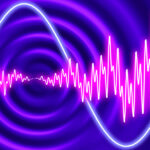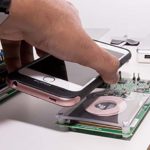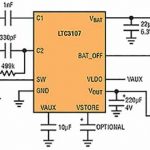Wireless power transfer has been around for a long time. The “crystal set” or “crystal radio” over 100 years ago used the power carried in the radio signal to produce sound without any amplification or receiving circuit power source. Early spark gap transmitters also used tuned wireless power transmission. Now the circuitry is more sophisticated but still using similar principles.
You can buy mobile phones with wireless charging using the Qi standard from the Wireless Power ConsortiumTDK. One educational institution has recently demonstrated targeted power transmission over several feet to a flying drone and hopes to increase the range further. However, microwave power transmission to a small helicopter was demonstrated decades ago. Such systems need to target the power transmission direction and track the receiver to prevent tiny efficiencies. Similar techniques have been used to demonstrate the same principle but with the long term goal of transmitting solar power from space back to Earth
Most wireless power transfer systems for consumer use are currently very short range. There are chips around from companies such as Texas Instruments and Linear Technology to help you build a wireless charging system. These systems rely on two resonant coils in close proximity. Companies such as Wurth Elektronik, TDK, and Elytone Electronic make the all-important coils for such devices.
The coils are usually designed to meet the Qi specification, and there are various Qi specifications they could meet such as A5, A10 or A11. The different Qi specifications cater for different coil sizes as well as different inductances and power ranges.
Linear Technology sells a couple of demonstration boards for their LTC4125/4120 wireless power transmitter/receiver chips which probably wouldn’t be a bad way to start if you wanted to experiment. The transmitter is relatively straightforward.
The power transfer coil is part of a series resonant circuit. The LTC4125 is quite a sophisticated chip and will detect the tuned circuit resonance as well as detect the presence of a receiver and also adjust the drive current to optimize the power transfer.
The efficiency of wireless power transfer systems varies enormously. This is due to the low coupling coefficient (k) of the inductors used which is even worse when just a few millimeters separate the coils. Lateral misalignment also makes the k factor worse. While a well-designed transformer will have a k factor of 0.95 or more, with a wireless power transmission system you might only have a k of 0.2 or 0.4. Linear Technology has a graph showing the effect of the distance and lateral misalignment on the k factor in their LTC4120 datasheet.
The matching LTC4120 receiver is a resonant coupled rectifier with buck converter for charging batteries. They also have an LTspice test jig for the receiver that you can download and simulate. The test jig doesn’t include the LTC4125 transmitter but uses a simple oscillator using a couple of MOSFETs. It would allow you to check you have the correct resonant components and some aspects of the receiver. While you can probe the simulation to check efficiency I am not sure how reliable that would be because the transmitter section is not an LTC4125, so will not show various features such as the auto resonance or optimum power search, both of which should improve efficiency.
When designing a tuned system, it is important that everything is tuned to the correct (i.e. same) frequency. When resonating your coupling coils to a specific frequency it is important to choose the capacitors wisely – not poor tolerance dielectric devices. You will have to allow for the tolerance of the inductor which is likely to be 10%, although you could tune each device if you want to optimize efficiency.
There are some RF power harvesting receivers around from Powercast. However, the 915MHz device uses a 3W transmitter which would require either spread spectrum transmission or frequency hopping to be legal. The Powercast transmitter uses Direct Sequence Spread Spectrum modulation. In Europe, the allowable band would be 868MHz but would not allow more than 0.5W of transmission power and then only with <10% duty cycle. I am not sure of the point of such “harvesting” solutions. Efficiency will be very low with an omnidirectional antenna and still fairly low with a directional one.











You might like to check out:
http://www.ece.auckland.ac.nz/en/about/our-research/research-areas/powerelectronicsresearch.html#60cb30d42659405480c874f1cb3923b0
Here Auckland University are using Inductive Power Transfer to transfer kW and over large distances.
Dear mr Francis
My name is Jawahir. I’m an Aviation Engineer in Commercial Aircraft
I’m interested to research related to the PWT.
Could your share the good journal / parer to me ?
Thank you very much
Best Regards
Jawahir